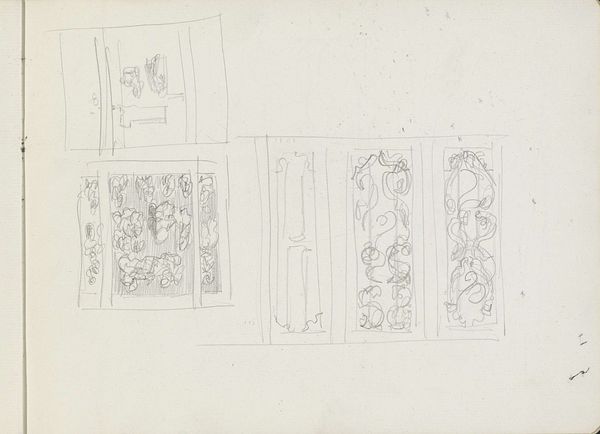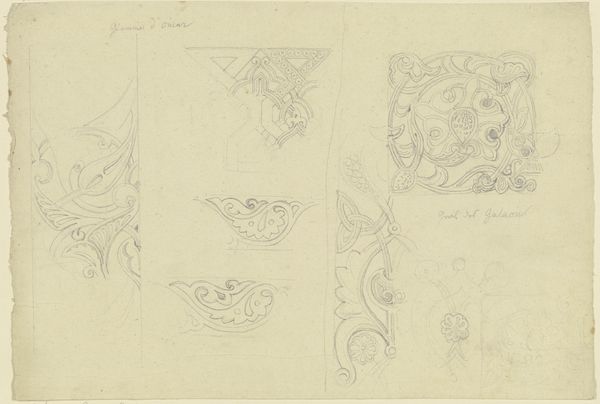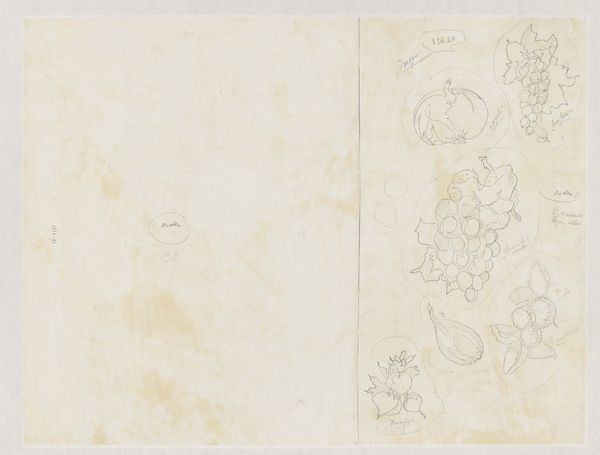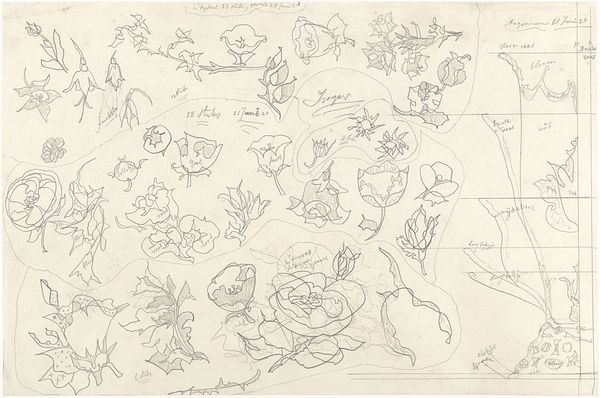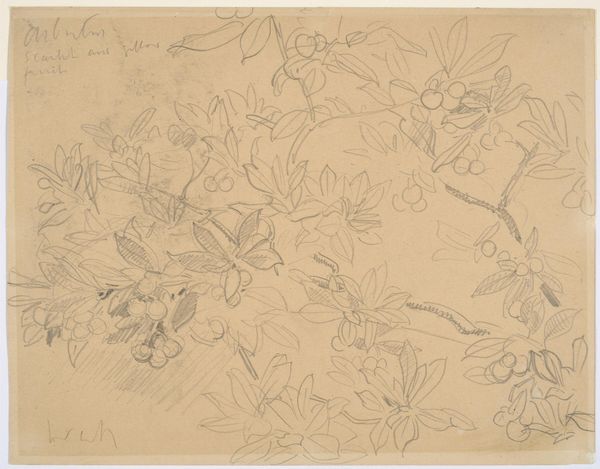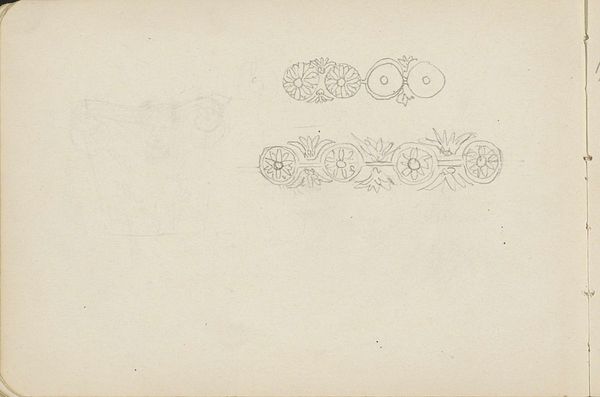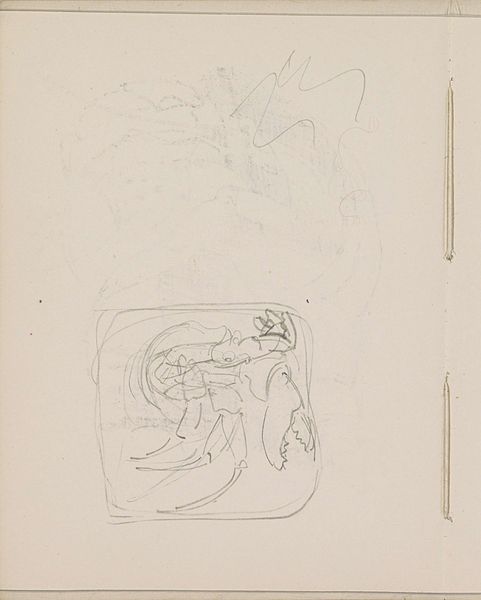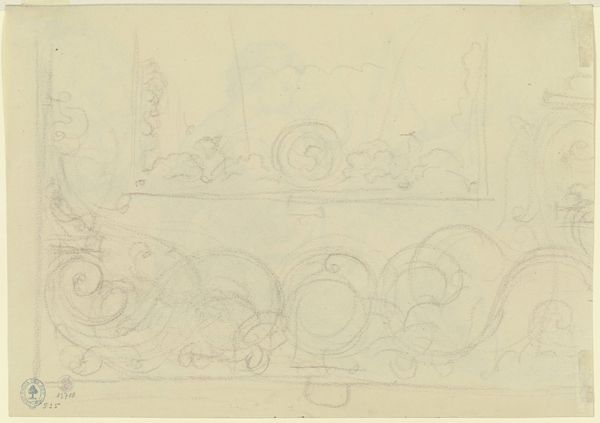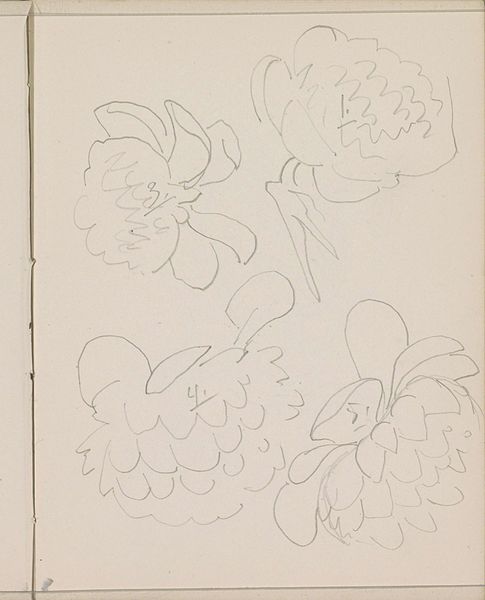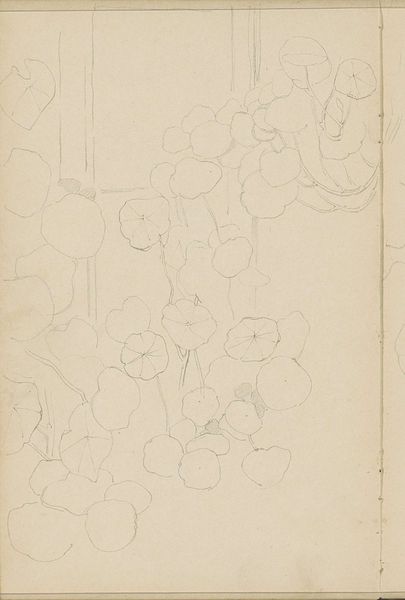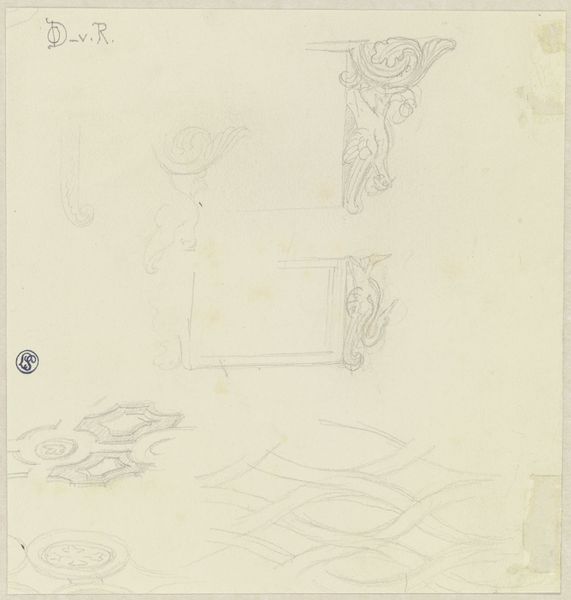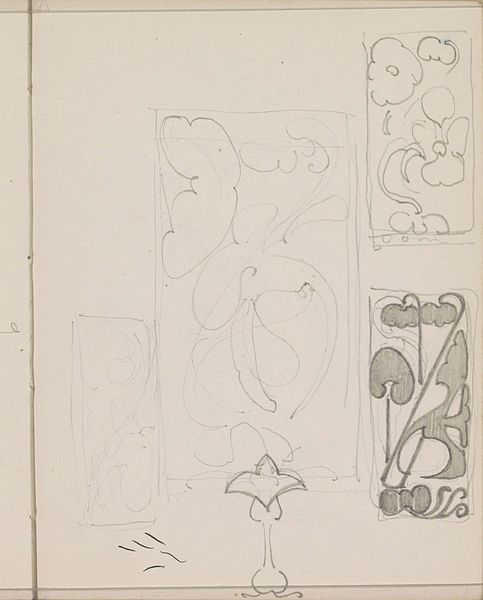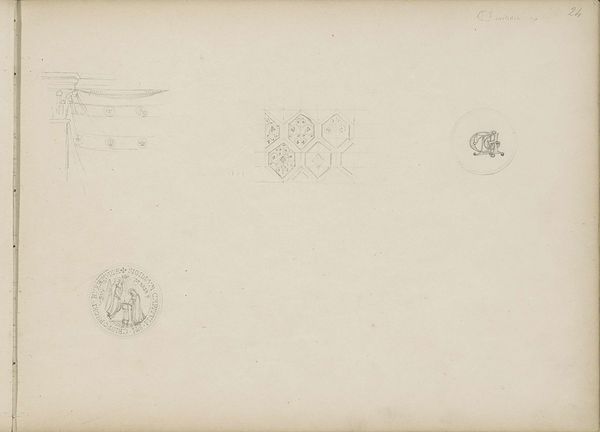
drawing, pencil
#
drawing
#
geometric
#
pencil
#
decorative-art
Dimensions: height 495 mm, width 645 mm
Copyright: Rijks Museum: Open Domain
Curator: Welcome. Today, we're exploring Theo Colenbrander's "Ontwerpen voor aardewerk en aardewerk decoratie," a drawing possibly from the 1920s. It seems to be design sketches intended for earthenware. Editor: My first impression is of faded grandeur—these forms, still so suggestive, hint at the potential vibrancy they once held, or were meant to hold. There's an elegant incompleteness to it. Curator: Precisely. Look at the geometry that structures the page; the circles, grids and calculated lines serve as a formal underpinning to what could easily have become mere ornamentation. Observe how each distinct motif—flowers, landscapes, abstracted forms—exists both autonomously and in dialogue within Colenbrander's system. Editor: The stylized botanical forms evoke a potent blend of nature and culture. Flowers rendered so abstractly almost become heraldic emblems, resonant with echoes of folklore and symbolic associations of nature’s bounty. These resonate even more strongly as this was sketched down around the same time as The Great Depression when these promises were more potent. Curator: And what of the interplay between the negative space and the positive forms? The pencil markings appear delicate, yet are quite precise. Editor: They invite the eye to complete the narrative and engage actively in the act of aesthetic discovery. I see a tension there that pulls at the heartstrings; these shapes hold a story or are pregnant with possible stories, and yet they're still potential. Curator: I agree. One could also see this work reflecting the shifting dynamics of interwar design, oscillating between the traditions of craft and industrial reproducibility. Editor: Perhaps we find within these tentative designs an embodiment of the human capacity for transformation, holding cultural significance? This connects beyond just this specific drawing, instead gesturing at deeper meanings within its style and aesthetic period. Curator: That's wonderfully said. This work offers us both visual and conceptual insights, don't you think? Editor: Absolutely. It is a glimpse into an archive, showing us more than just potential sketches, it shows how cultural and aesthetic hopes gestate.
Comments
No comments
Be the first to comment and join the conversation on the ultimate creative platform.
